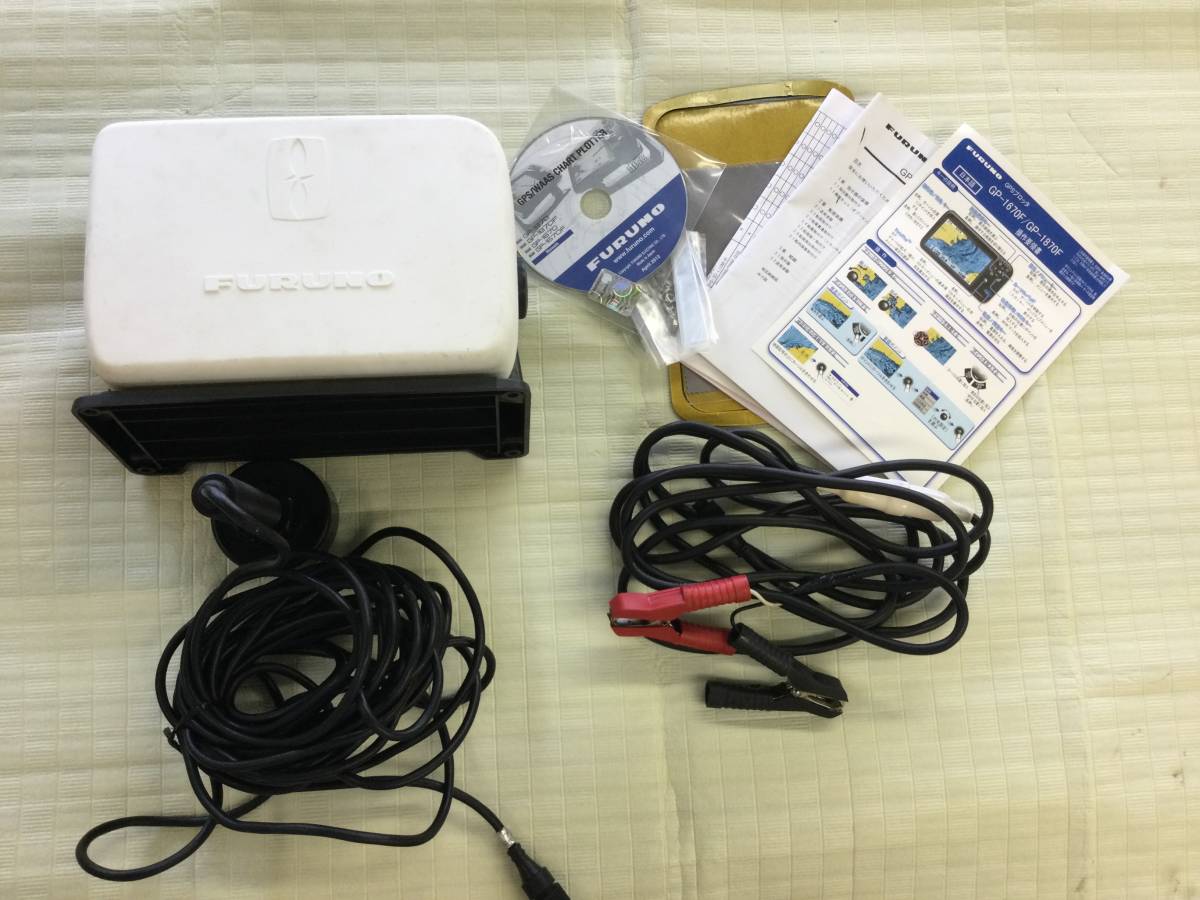商品の詳細
メーカー:FURUNO
型番:GP-1670F
【商品の使用状況:海で何回か使用した品です。出品前に通電確認しました。GPS測位しました。振動子からもカチカチという音がでてしました。電源の先には、ワニ口クリップを取り付けています。
【商品仕様】
指示器:5.7型 TFTカラー液晶画面サイズ:115.2x86.4cmGPSアンテナ:内蔵電源:DC12-24V重量:約1.4kg(ハンガー付き)
振動子:50/200KHZ 600W
フルノNEWPEC地図カード
詳しくは、メーカーHP、カタログ等をご確認ください。
送料はこちらで負担します。
配送は、ヤマト運輸にて送らせていただきます。
支払いは、かんたん決済のみです。
品ということをご理解いただけるかたのみ落札ください。ノークレームノーリターンでお願いします。
商品の説明
最新のクチコミ
出産祝いのギフトで購入しました。離乳食が始まる時期なので喜んでもらえました。
- UXV*****さん
- 39歳
- アトピー
- クチコミ投稿 3件
購入品
昨年、ネイビー、チャコール、ホワイトの3色購入しました。部屋着にも楽チンですし、上に何か羽織れば近所なら外出もできます。楽チン過ぎて毎日ローテーションで着用していました。
子供と遊ぶにも抱っこするにもストレッチ抜群なので着ていて苦になりません。
今年はブラックを購入しました。大人っぽくてとても良かったです。ただ、着てみた感じが昨年の物よりもタイトになってます。ピタリとしてフィット感があります。スリットがないため、足があまり開きません。(158センチ43キロです。)
でもストレッチ素材なのでそこまで気になりません。今度はモカを購入予定です。
- DWW*****さん
- 26歳
- アトピー
- クチコミ投稿 3件
購入品
結構早く届きました!
お試し電池がついており、コンパクトで使いやすいです
カバーがついているんですが、全体を覆うカバーはすこし緩めで取り出し方を油断すると本体を落としそうだなと思い星4にしました
- WJA*****さん
- 25歳
- アトピー
- クチコミ投稿 2件
購入品
発送も早く商品も可愛く満足です。
それだけじゃなくてとっても使いやすです。
- HXC*****さん
- 60歳
- アトピー
- クチコミ投稿 2件
購入品
結婚式に着る服が地味めの色なので、ベージュをあわせてみました。
ラメがキラキラきれいですが、ベージュ自体は落ち着いた色味で
ちょうどいいなと思いました。
- WGK*****さん
- 31歳
- アトピー
- クチコミ投稿 3件
購入品
体型が変わり服が11号→13号にアップ、今回1000円OFFクーポンの後押しがあり購入。164cm/58kg/B75 13ARでワンピースの肩が少しキツイ様に感じました。ボレロはゆったり着れました。これ以上太るときびしい感じです。フレアーになっているので40代後半の下半身大きめの私にも余裕でしたし、丈の長さも上品で良かったです。
- MHW*****さん
- 27歳
- アトピー
- クチコミ投稿 1件
購入品
以前の財布はファスナーが直ぐに壊れましたがこの財布はファスナーもしっかりしており皮のしつも手に馴染み安くカードポケットの数も多くとても使いやすさを感じます。同じ素材の小銭入れが届くのを楽しみにしています。
大分市 Y.Y
- ZQB*****さん
- 47歳
- アトピー
- クチコミ投稿 3件
購入品
今回は4ミリのエメラルドでした。
毎月月替わりのジュエルを楽しみにしています。
少し青みがかった色合いがとても気に入りました。
来月も楽しみにしています。
- QFX*****さん
- 53歳
- アトピー
- クチコミ投稿 2件
購入品
初めてウクレレを購入しました。初心者にはわかりやすいグッズが含まれおり、大満足しています
- LIM*****さん
- 26歳
- アトピー
- クチコミ投稿 3件
購入品
スポーツ、レジャー・船、ボート・スポーツ、レジャー・船、ボート
-
-
3

ゲーミングモニター VG27A
ゲーミングモニター
¥16,000
-
5

三浦春馬 オフィシャルブログからフォトブック第1巻
三浦春馬
¥17,000
-
6

本物の霊能者 相談60分
本物の霊能者
¥11,000
この商品を見ている人におすすめ
-
-

とても豪華!水晶玉付重厚感溢れる宝船の置物(未使用長期保管品)
¥15,800
-

インドネシア 旧紙幣 10,000ルピア 1968年 PMG
¥65,000
-

SEGA
¥8,500
-

フジクラ スピーダーNX
¥24,000
-

NORITZ
¥43,000
-

ラペラ製 シート ソフテイル
¥20,000
-









